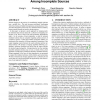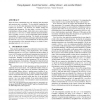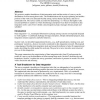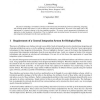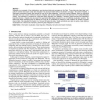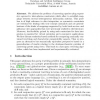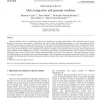131
Voted
CIKM
2010
Springer
14 years 10 months ago
2010
Springer
Schema merging is the process of consolidating multiple schemas into a unified view. The task becomes particularly challenging when the schemas are highly heterogeneous and autono...
107
Voted
PVLDB
2010
14 years 10 months ago
2010
Today’s data integration systems must be flexible enough to support the typical iterative and incremental process of integration, and may need to scale to hundreds of data sour...
103
click to vote
PVLDB
2010
14 years 10 months ago
2010
There has been considerable past work studying data integration and uncertain data in isolation. We develop the foundations for local-as-view (LAV) data integration when the sourc...
102
click to vote
GI
2010
Springer
14 years 10 months ago
2010
Springer
Abstract: Large biomedical projects often include workflows running across institutional borders. In these workflows, data describing biomedical entities, such as patients, bio-m...
103
Voted
DEBU
2002
15 years 2 days ago
2002
We present a modular breakdown of data integration tasks and the results of a survey on the distribution of effort among those tasks. The modularization aids in project planning a...
109
Voted
BIB
2002
15 years 3 days ago
2002
The process of building a new database relevant to some field of study in biomedicine involves transforming, integrating, and cleansing multiple data sources, as well as adding ne...
114
Voted
TVCG
2008
15 years 4 days ago
2008
Abstract-Wikipedia is an example of the collaborative, semi-structured data sets emerging on the Web. These data sets have large, nonuniform schema that require costly data integra...
120
click to vote
AICOM
2004
15 years 4 days ago
2004
Abstract. We address the problem of answering queries using expressive symmetric inter-schema constraints which allow to establish mappings between several heterogeneous informatio...
JBI
2007
15 years 5 days ago
2007
Genomic medicine aims to revolutionize health care by applying our growing understanding of the molecular basis of disease. Research in this arena is data intensive, which means d...
117
Voted
JODS
2006
15 years 6 days ago
2006
While providing a uniform syntax and a semistructured data model, XML does not express semantics but only structure such as nesting information. In this paper, we consider the prob...
